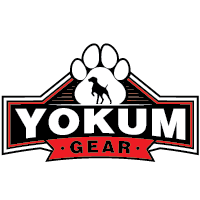Ensuring your pet has a comfortable and secure harness is crucial for their safety and your peace of mind. A well-fitted harness not only provides better control during walks but can also prevent injuries caused by ill-fitting equipment. In this guide, we will explore various factors you need to consider to select the perfect fit harness for your pet.
Types of Harnesses
Before selecting a harness, it’s important to understand the various types available on the market. Each type serves different purposes and fits differently on your pet.
-
Back-clip Harness:
This is the most common type of harness, with the leash attachment located on your pet’s back. It’s suitable for dogs that do not pull excessively. It is easy to put on and take off and is ideal for everyday walks.
-
Front-clip Harness:
The leash clip is located on the pet’s chest, offering greater control and helping to reduce pulling. It’s perfect for training dogs who tend to pull on the leash.
-
Dual-clip Harness:
This versatile harness has both front and back leash attachment points, allowing you to switch based on walking conditions and training needs.
-
Step-in Harness:
Designed for ease of use, pets step into this harness rather than having it pulled over their heads, which can be beneficial for anxious or nervous animals.
-
Vest Harness:
Resembling a vest, this harness offers additional padding and comfort. It’s ideal for small dogs and often comes in fashionable designs.
Material and Comfort
The material of the harness plays a significant role in comfort and durability. Some common materials include:
-
Nylon:
Durable and weather-resistant, nylon harnesses are a popular choice. However, they might not be as comfortable in hot weather.
-
Leather:
Stylish and long-lasting, leather harnesses are comfortable and form-fitting but can be more expensive and require maintenance.
-
Mesh:
Breathable and lightweight, mesh harnesses are great for warmer climates and small to medium-sized pets.
-
Padding:
Look for harnesses with padding along the chest and back areas to prevent chafing and ensure comfort during longer walks.
Measuring Your Pet
Getting the correct measurements is crucial for finding a harness that fits perfectly. Here’s how to measure your pet:
-
Chest Girth:
Measure around the widest part of your pet’s chest, typically just behind the front legs. This measurement is the most important for ensuring a comfortable fit.
-
Neck Girth:
If the harness includes a neck piece, measure around the base of the neck where it meets the shoulders.
-
Weight:
Many manufacturers provide sizing guidelines based on weight, but these should be used in conjunction with chest and neck measurements for the best fit.
Adjustability and Safety Features
An adjustable harness allows you to customize the fit to your pet’s unique shape and size. Look for the following features:
-
Multiple Adjustment Points:
Harnesses with several adjustment points on the chest, neck, and back provide a more customized fit.
-
Safety Buckles:
Quick-release buckles are convenient, but ensure they are sturdy and secure to prevent accidental escapes.
-
Reflective Strips:
Reflective material enhances visibility during evening walks and increases your pet’s safety.
-
Padded Straps:
Padded straps can prevent chafing and distribute pressure evenly, enhancing comfort during long walks.
Final Tips
Here are some additional tips to help you choose the perfect harness:
-
Test the Fit:
Once you’ve purchased a harness, allow your pet to wear it indoors for short periods to get accustomed to it. Ensure it is snug but not too tight—you should be able to fit two fingers between the harness and your pet’s body.
-
Observe Your Pet:
Watch for signs of discomfort such as excessive scratching, biting at the harness, or difficulty walking. These may indicate that the harness is too tight or not the right style for your pet.
-
Consult a Professional:
If you’re still uncertain, consider asking a veterinarian or a professional pet trainer for recommendations based on your pet’s specific needs.
Choosing the perfect fit harness might take some time and experimentation, but the end result will be a more comfortable and enjoyable experience for you and your pet. A well-fitted harness ensures better control, safety, and comfort, making walks and outdoor activities a pleasurable experience for both of you.

